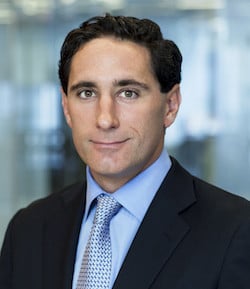
For a business that’s all of 16 months old, swap execution facilities have made steady progress in establishing themselves as viable trading venues.
In December, weekly volume in interest-rate swaps was reported as high as $970 billion, while credit swaps weighed in at $236 billion, according to the FIA SEF Tracker released in early February. While that represents only a small fraction of a global swap market whose size is estimated at $600 to $700 trillion, SEF operators and observers note that trading volumes have increased from $0 as of Oct. 1, 2013, the day before the first SEFs commenced operations.
“In 2014, market participants switched to regulated SEF trading and adopted electronic trading of derivatives in what we would characterize as a very progressive and measured pace,” said Chris Amen, head of U.S. institutional rates markets at Tradeweb Markets. “We’ve seen consistent growth of new participants on our SEFs, as well as an increase in volumes from current participants as they became more comfortable with the infrastructure and the behavior of e-trading.”
Tradeweb’s operates two SEFs: its flagship TW SEF, which allows market participants to trade interest rate swaps and credit default swap indices in a disclosed, request-based market with an order book, and the DW SEF, which deploys an anonymous, central limit order book (CLOB) model.
“Clients have become more comfortable with what’s been mandated to trade on SEFs, and they’re exploring how to transition larger portions of their derivative strategies onto electronic platforms,” Amen told Markets Media.
The primary end users of SEFs are the firms that trade index credit default swaps or plain-vanilla interest rate swaps in the U.S. as part of institutional portfolio management. This essentially includes all large fixed-income managers, a universe that includes Pimco, State Street, BlackRock. Fidelity, Prudential, TIAA-CREF, and Vanguard.

Chris Amen, Tradeweb
For these investment giants, the transition to a SEF world as decreed by regulatory fiat has been costly and time-consuming, and there are ongoing uncertainties and concerns regarding liquidity sourcing, but the efficiencies of electronic trading are recognized through the smoke of an emerging marketplace that’s still new to all involved parties.
At Vanguard, preparing for SEFs entailed “a huge buildout in terms of operational onboarding, the legal framework, and getting ready for clearing,” said Sam Priyadarshi, head of fixed income derivatives at the Malvern, Pennsylvania-based firm. “We had to sign up with FCMs (Futures Commission Merchants) for swap clearing, and we had to get our portfolio management system geared to trading with SEFs.”
“This was a massive rollout, so it was a big cultural change for us,” Priyadarshi continued. “We had never traded swaps electronically before, although there was some semblance of swaps trading on Tradeweb and on Bloomberg before SEF days.”
Priyadarshi, an 18-year derivatives veteran, leads a team responsible for derivatives trading for all Vanguard’s fixed income funds. His team is also responsible for portfolio risk management of active fixed income funds totaling more than $130 billion. He manages the research and execution of derivatives overlay strategies for active fixed income funds.
While an OTC swap trade transacted over the phone may take 15 minutes or more, the same trade routed through a SEF can happen with the click of a mouse. “I can send the trade to the SEF electronically and it gets a pre-clearing check done instantaneously, and then I can do RFQ (Request For Quote) or CLOB,” Priyadarshi said.
“It’s like trading stocks or futures, where there’s the benefit of electronic screen trading and straight-through processing, which I get by moving OTC swaps to SEF,” said Priyadarshi. “The other advantage is that I don’t have to deal with someone on the phone. I can get streaming quotes on the SEF.”
Still, as SEF users discover new opportunities, they also discover new challenges. Before SEFs, “I knew where the market was trading, and I could call people that had good levels at two or three or four dealers and transact in the OTC market,” Priyadarshi said. “Now, there are 22 SEFs, and I can only connect to a few of them, so am I missing on the best levels?”
